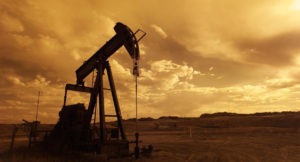About 70% of global oil production comes from onshore oil drilling, meaning that oil is drilled on land.
The remaining 30% is produced from offshore oil platforms and deepwater drilling. While onshore drilling is generally less expensive than offshore drilling, it can still come with environmental risks and impacts on local communities.
As the world continues to rely on oil as a major energy source, there is a growing push towards exploring more sustainable energy options and reducing our carbon footprint.
Drilling On Land: “Onshore Drilling”

Onshore drilling, or drilling on land, involves extracting oil and gas from reserves located beneath the earth’s surface. This type of drilling provides a less expensive and more accessible method of extraction compared to offshore drilling.
However, there are also potential environmental and safety risks associated with onshore drilling, such as groundwater contamination and air pollution.
Proper regulatory oversight, maintenance of equipment, and proper waste handling practices can minimize these risks. Additionally, onshore drilling plays a significant role in the global energy supply chain, contributing to economic growth and job creation in countries with significant reserves.
Nonetheless, there is ongoing debate regarding the long-term sustainability of fossil fuel extraction, and the need for transitioning to alternative energy sources to mitigate the impacts of climate change and ensure a sustainable future.
How does an Oil Well Work?
Oil wells drill through rock to reach underground oil, using a derrick to hold the equipment. A wellbore is created and lined with casing, a fluid cools the drill bit and brings rock cuttings to the surface. A pump brings oil to the surface and it is transported through pipelines to refineries where it is turned into gasoline, plastics, and other products. Oil wells provide fuel for transportation, manufacturing, and heating.
Environmental Impact of Oil Drilling On Land
Oil drilling can have severe environmental impacts on the land. The drilling process can result in the release of toxic chemicals into nearby waterways, leading to contamination of drinking water sources and harm to aquatic wildlife. Drilling technologies have also been linked to seismic activity and the disruption of ecosystems, which can cause soil erosion, landslides, and deforestation.
What is involved in the design of an Oil Rig?
What types of Oil Rigs are there?
Can Geothermal Heating and Cooling help the environment?

Geothermal heating and cooling is a sustainable way to regulate indoor temperatures by using the earth’s natural heat. It can help the environment by reducing carbon emissions associated with traditional heating and cooling methods.
• Geothermal systems can use up to 70% less energy than traditional systems, thereby reducing energy consumption and greenhouse gas emissions.
• Geothermal energy is renewable, meaning it won’t run out and won’t contribute to pollution or environmental degradation.
• Additionally, geothermal energy systems have a long lifespan, reducing the need for frequent replacement or maintenance and reducing waste.
• Furthermore, geothermal systems can improve indoor air quality by reducing reliance on fossil fuels, and the associated air pollution.
By using geothermal heating and cooling, we can improve energy efficiency, reduce our carbon footprint, and create a more sustainable future.
Follow this link to learn more about How Geothermal Heating and Cooling Works.
Interested in the numbers? Plug in your info into our Savings Calculator and get an idea of your potential energy savings.
ECS Geothermal
Heating and Cooling with Dirt for Over 25 30 Years!
We are the largest geothermal contractor in Kansas City. We are 100% focused on ground source heat pumps – “All We Do Is Geothermal!”

Phone: 816-532-8334
Contact Us Today for a free consultation.






